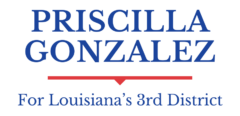The Violence Against Women Reauthorization Act of 2021 (H.R. 1620) seeks to extend and strengthen the Violence Against Women Act (VAWA) of 1994, a landmark piece of legislation that protects women from domestic abuse, dating violence, sexual assault, and stalking. The key provisions of H.R. 1620 are:
- Enhanced Protections:
- Expands protections for women in marginalized communities, including LGBTQ+ individuals, Native American women, and immigrant women.
- Improves services for victims of domestic violence and sexual assault, including housing assistance and legal aid.
- Prevention Programs:
- Increases funding for prevention programs aimed at reducing violence against women.
- Supports educational programs to promote awareness and prevent gender-based violence.
- Law Enforcement and Judicial Measures:
- Provides grants to law enforcement agencies to improve the response to domestic violence and sexual assault.
- Enhances training for law enforcement officers, prosecutors, and judges to handle better cases involving violence against women.
- Support for Survivors:
- Strengthens support services for survivors, including counseling, legal assistance, and healthcare services.
- Ensures better access to protective orders and shelters for survivors of violence.
Clay Higgins’ Opposition to H.R. 1620
Representative Clay Higgins voted against H.R. 1620. Specific reasons for his opposition include:
- Second Amendment Concerns:
- Higgins and other opponents argued that the bill included provisions that could infringe upon Second Amendment rights. One such provision would close the “boyfriend loophole,” preventing individuals convicted of misdemeanor crimes of domestic violence against dating partners from owning firearms.
- Federal Overreach:
- Some critics, including Higgins, believed that the bill represented an overreach of federal power, imposing mandates on states and localities that should be addressed at the state level.
- Fiscal Concerns:
- The increased funding and expansion of programs proposed by the bill raised concerns about the potential financial burden on the federal budget.
Rising Violence Against Women in the USA
The United States has seen worrying increases in violence against women, with numerous sources emphasizing the importance of tackling this issue.
- Increased Domestic Violence Reports:
- The COVID-19 pandemic exacerbated domestic violence rates as lockdowns and economic stressors trapped many women with their abusers. According to a report by the American Journal of Emergency Medicine, domestic violence cases increased by 25-33% globally during the pandemic.
- Higher Rates of Homicides:
- Data from the National Commission on COVID-19 and Criminal Justice (NCCCJ) indicated a significant increase in domestic violence-related homicides during the pandemic. In some areas, such as Chicago and New York City, these rates rose by more than 50%.
- Challenges for Marginalized Groups:
- Women from marginalized communities, such as Native American and LGBTQ+ women, face higher rates of violence. A study by the Urban Indian Health Institute found that 84% of Native American women have experienced violence in their lifetime.
H.R. 1620, the Violence Against Women Reauthorization Act of 2021, aims to strengthen protections and support for victims of gender-based violence. Despite the bill’s extensive measures to combat escalating violence against women in the United States, Representative Clay Higgins opposed it, citing worries about Second Amendment rights, federal overreach, and fiscal impact. However, rising rates of domestic violence and the critical need for greater protective measures highlight the significance of such legislation.
